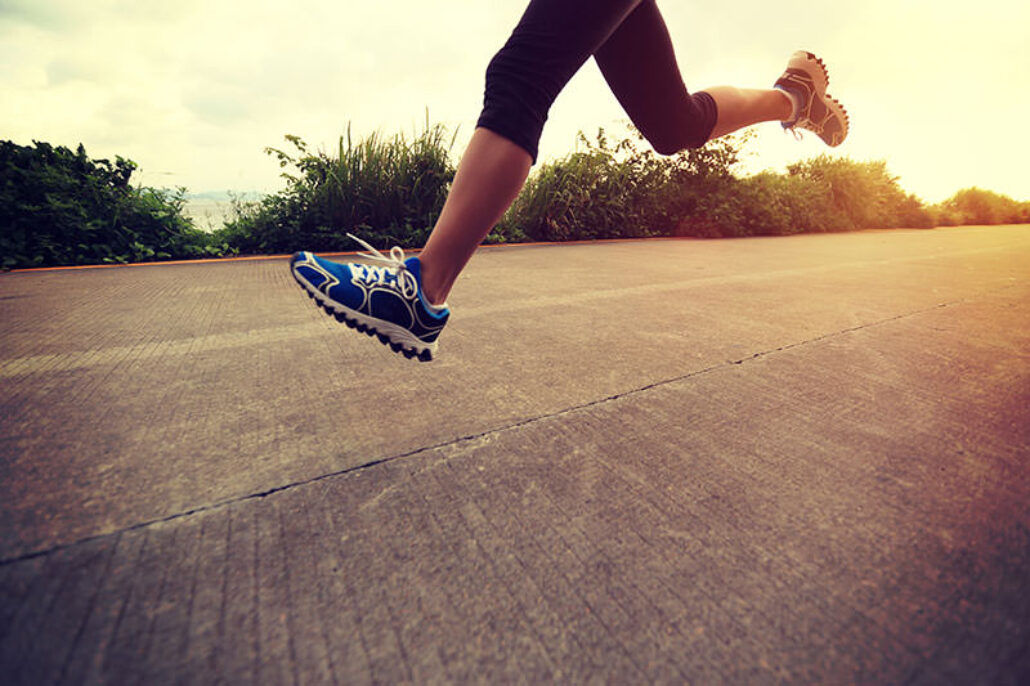Painful shin splints are a common injury among runners. We have some tips to help you prevent this overuse injury.
Nothing can take the pleasure out of a long summer run like the aching pain of shin splints. Runners are especially prone to this injury, and describe tenderness or sharp pain along the tibia, the large bone in the front of the lower leg. At first, the pain may subside when you stop running or exercising, but over time, it can become continuous.
Shin splints are an overuse injury, and can be triggered when you increase running frequency, intensity, or duration. Runners with flat feet or high arches are particularly susceptible. The pain is caused by repetitive stress on the tibia and the connective tissues that attach your muscles to your bone. Runners embarking on a new running program are particularly vulnerable. Shin splints can also be caused by playing tennis, squash, or basketball; sports played on hard surfaces and involving sudden stops and starts. Training in hilly terrain also puts extra stress on lower legs that can trigger tibial stress.
Although rest and ice can treat shin splints effectively, we’d prefer to prevent them all together. There are a number of preventative steps that you can take to sidestep shin splints.
- Wear running shoes that provide solid arch support and fit well, and replace them every 350 to 500 miles.
- Use arch supports for extra cushioning, especially if you have flat arches.
- Include cross training sports in your exercise program that do not cause impact to your shins. Swimming, walking, and biking are good options.
- Always begin any new activity or sport gradually, and slowly increase the time and intensity of your workout, to give your body opportunity to adjust.
- Focus on your form as you run. Aim for a shorter stride by controlling your foot landing and striking mid-foot instead of on your heel or toes.
- Include exercises that strengthen your calf muscles. Toe raises, leg presses, and other lower leg exercises can build strength and make you less prone to injury.
If you should develop shin splints, you can usually treat them successfully yourself. When you notice symptoms, adjust your schedule to avoid the activities that cause pain. While you are healing, switch to low-impact exercises like biking or swimming. Use ice to treat your shin pain. Wrap ice packs in a towel to protect your skin, and apply cold to your shin for 15 to 20 minutes per treatment, four to eight times a day. Pain should resolve in three to four days, and an over-the-counter pain reliever like ibuprofen or acetaminophen to help. Shin splints may take 3 to 6 months to heal completely. You’ll know your shin is completely healed when you can return to your usual activity without pain. If time and self-care don’t do the trick, consult with a sports physician who can check for a stress fracture or another shin problem, and develop a treatment plan to help you heal.
Summit Orthopedics offers comprehensive sports medicine expertise
From Olympians to pro athletes to kids in youth sports and those that just want to be more active—Summit Orthopedics delivers expert care by fellowship-trained sports medicine physicians. If you are recently injured or concerned about ongoing pain, Summit Orthopedics sports medicine specialists have the expertise to evaluate your discomfort and develop a plan to quickly and safely help you get back to being active.
Start your journey to stronger, healthier athletic condition. Find your sports medicine expert, request an appointment online, or call us at (651) 968–5201 to schedule a sports medicine consultation.
Summit has convenient locations across the Minneapolis-St. Paul metro area, serving Minnesota and western Wisconsin. We have state-of-the-art centers for comprehensive orthopedic care in Eagan, MN, Vadnais Heights, MN, Plymouth, MN, and Woodbury, MN, as well as several additional community clinics.
